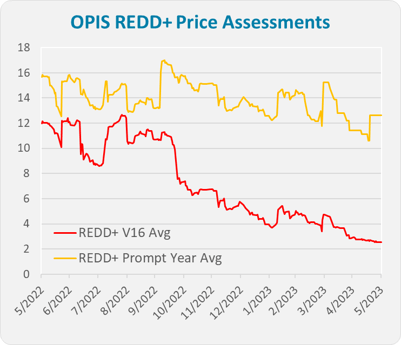Sign up for daily news updates from CleanTechnica on email. Or follow us on Google News!
In the United States, motorbikes are owned by fewer than 10% of households. They are primarily used for recreational purposes, such as cruising along mountain roads on weekends or exploring the woods and deserts on dirtbikes. While you may spot a few motorcycles being ridden daily, the numbers increase in areas with pleasant weather and less rainfall.
It’s unfortunate that motorcycles often carry a negative reputation, as they are actually one of the most efficient modes of transportation, if not the most efficient. Due to their ability to transport only the rider and essential belongings, gas-powered motorcycles can emit fewer emissions per mile compared to certain four-wheeled electric vehicles, although this is dependent on conservative driving. Furthermore, electric motorcycles consume 3-5 times less power than their four-wheeled EV counterparts. Consequently, motorcycles have lower per-passenger emissions than riding a bus and are equally environmentally friendly as taking a train (numbers proving this are available here, as well as here).
The reasons why more people choose not to commute to work on motorcycles are clear: safety and comfort. While the perception of motorcycle safety may be exaggerated, it is undeniable that riders are more vulnerable in accidents compared to those in cars, which provide a protective metal shell. Moreover, the convenience of having heating and air conditioning indoors is certainly a desirable benefit.
But globally, people are willing to endure more transportation hardship than in the United States. In fact, passenger cars only occupy the #3 spot in most copies of a vehicle sold, with the Toyota Corolla beating the rest. The #2 vehicle sold globally is the Honda SuperCub (a smaller motorcycle), and its variants. The most sold vehicle ever is a model of Chinese bicycle, the Flying Pigeon. So, there’s a TON of potential for electrifying transportation on two wheels!
So, it shouldn’t be any surprise that electric motorcycles have been growing on people, and their sales potential means that even more developed countries are starting to get some.
Kawasaki, a company with a rich history in the motorcycle industry, says it is poised to usher in a new era. Recently, the company unveiled two revolutionary electric vehicles, powered by cutting-edge battery technology and emitting zero emissions. This remarkable development reinforces their unwavering commitment to “Go with Green Power,” as showcased at the prestigious 2022 EICMA motorcycle show.
Designed to be a prominent presence in the 125cc motorcycle category, the new Kawasaki EV machines will be offered in two distinct styles: the Z e-1 and the Ninja e-1. Both models feature a mid-capacity type chassis and running gear specifications that deliver the exhilarating riding experience characteristic of Kawasaki, while also embodying the appeal of zero emissions.
Featuring a nearly silent and highly efficient brushless motor, rated at 5 kW (with an impressive peak of 9 kW when needed), these two EV models boast an innovative twin (removable) battery solution. Unlike their competitors, these models wire the batteries in parallel, resulting in more efficient charge utilization. With a range of charging options available, this dual battery configuration allows for unparalleled portability, overcoming the limitations faced by heavy single-item applications.
The clutchless design, combined with a seamless “twist and go” riding style, enhances the sheer joy of riding. This exhilarating experience is further enhanced by ingenious features tailored to the rider, including two riding modes (Road and Eco). Additionally, an exciting “e-boost” option is available, providing an instantaneous surge of power and acceleration, reaching a maximum of 9 kw. With a potential top speed of 99 kph, this feature can be engaged via an e-boost button conveniently located on the right handlebar, just below the twist grip.
Riders of the Kawasaki Z e-1 and Ninja e-1 can impress their friends with a walk mode feature, enabling these motorcycles to maneuver at a walking pace in both forward and reverse directions. This functionality proves especially handy when dealing with tight parking spaces or maneuvering uphill in reverse.
Featuring a distinctive Metallic Bright Silver and Metallic Matte Lime Green design, which will serve as the iconic livery for upcoming Kawasaki EV models, the rider’s perspective is beautifully centered around a TFT meter with seamless smartphone integration.
By providing information on machine riding status, range, boost function availability, and selected riding level (Road or Eco), the TFT meter seamlessly integrates with the user-friendly throttle. Coupled with the ABS brakes of a 400cc motorcycle class and a sturdy trellis type chassis, it delivers a genuine on-road presence and the riding reassurance that has been lacking in the entry-level EV-powered two-wheeler category.
There are multiple options for charging, including a charge docking station where a battery can be placed, or using a lead to connect the off-board charger unit to the machine through an under-seat socket while the batteries remain in place. Some cool features of the advanced Li-Ion batteries include built-in charge indicators and a symmetrical design that allows for easier placement within the machine. Additionally, there is a convenient lockable stowage area above the batteries, located below the battery cover.
Kawasaki says these latest additions, the Z e-1 and Ninja e-1 models, embody the iconic Sugomi style with a touch of innovation. These motorcycles come equipped with a range of accessories, including the Ergo-Fit seats (+30mm) and charging solutions. With this new chapter, Kawasaki paves the way for a greener future, captivating two-wheel enthusiasts worldwide. It’s a testament to their illustrious history and a spark of innovation for a new era.
Next month, both machines are set to arrive in the UK, and Kawasaki will soon confirm their prices. Unfortunately, there are no announced plans to bring either model to the United States. What’s particularly sad about this is that both motorcycles would be a big hit in the States, even if only sold to hobbyists and a few people who would use them to get to work. But, maybe that will come later, and with more range for longer rides.
The question of pricing is also going to be important. One of the reasons many electric motorcycles have struggled in the past is that they offered less riding fun (in terms of time and range, but not torque!) than their gas-powered counterparts. If the pricing is right, they might break through. If not, they’ll be expensive toys that don’t get any real traction (at least among buyers).
Featured image provided by Kawasaki.
Have a tip for CleanTechnica? Want to advertise? Want to suggest a guest for our CleanTech Talk podcast? Contact us here.
EV Obsession Daily!
I don’t like paywalls. You don’t like paywalls. Who likes paywalls? Here at CleanTechnica, we implemented a limited paywall for a while, but it always felt wrong — and it was always tough to decide what we should put behind there. In theory, your most exclusive and best content goes behind a paywall. But then fewer people read it!! So, we’ve decided to completely nix paywalls here at CleanTechnica. But…
Thank you!
Tesla Sales in 2023, 2024, and 2030
CleanTechnica uses affiliate links. See our policy here.




